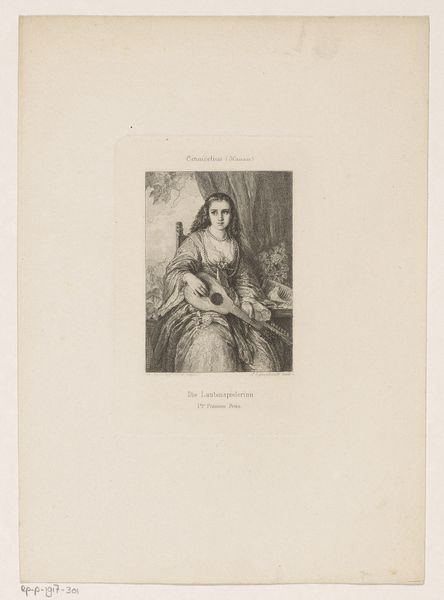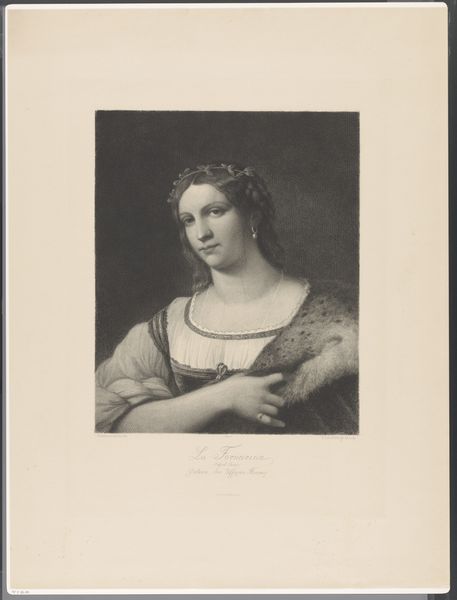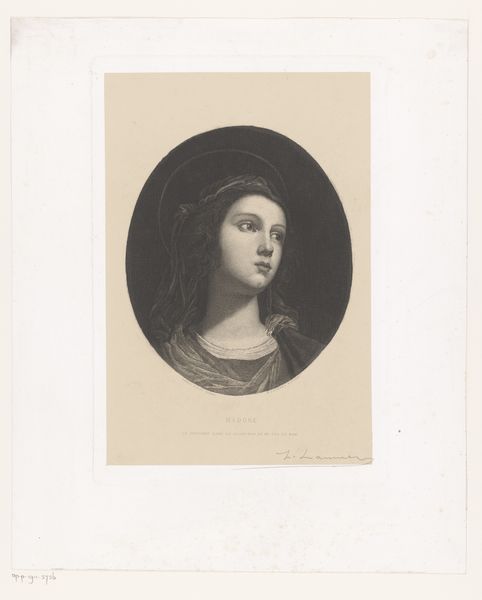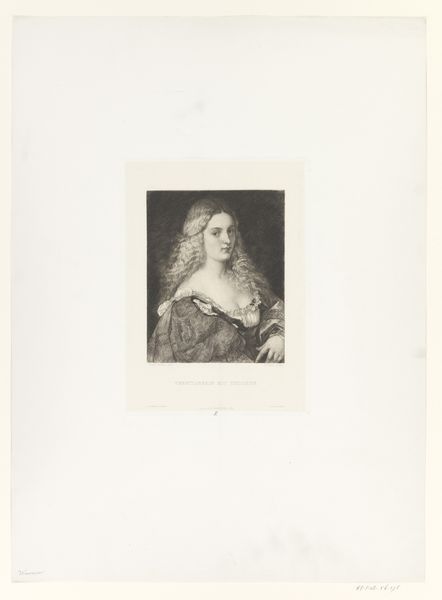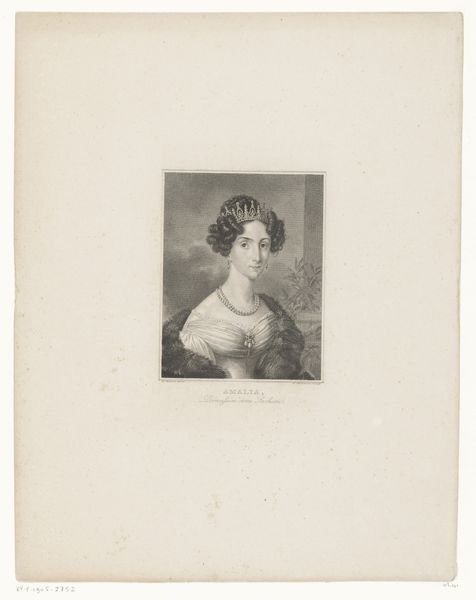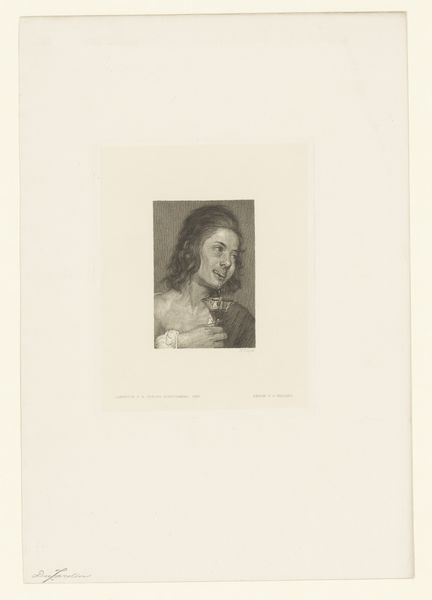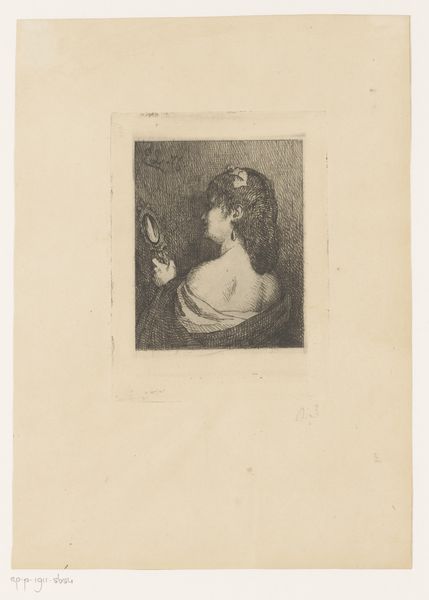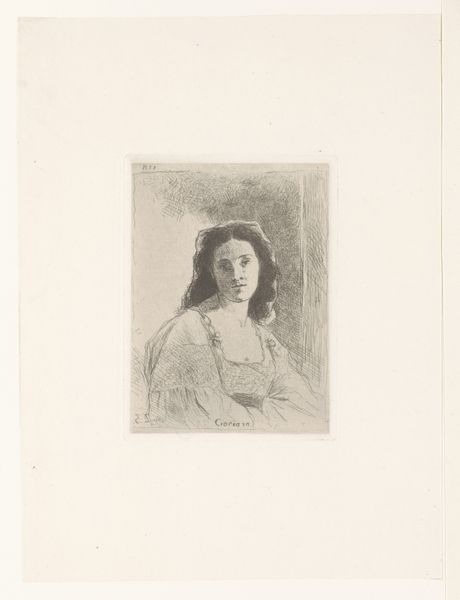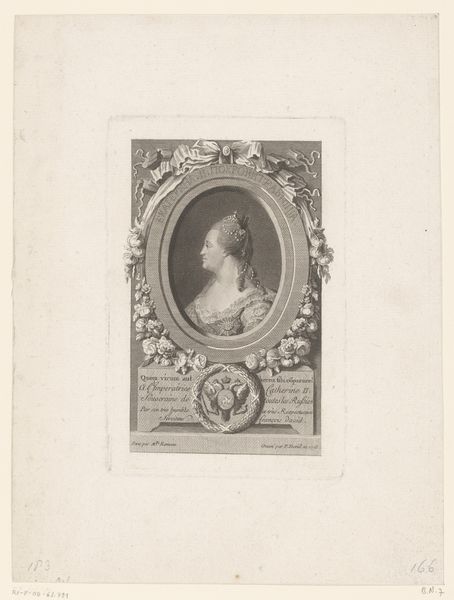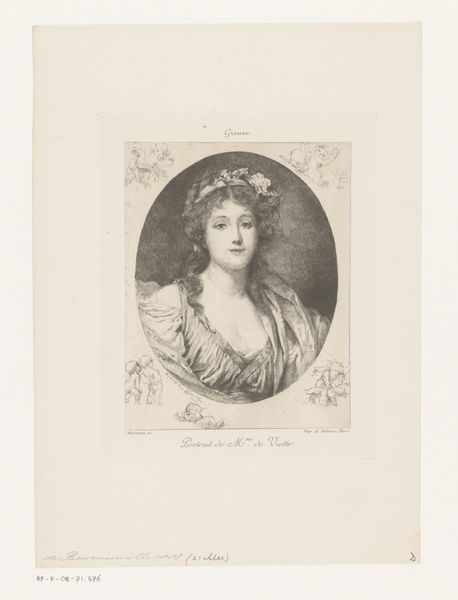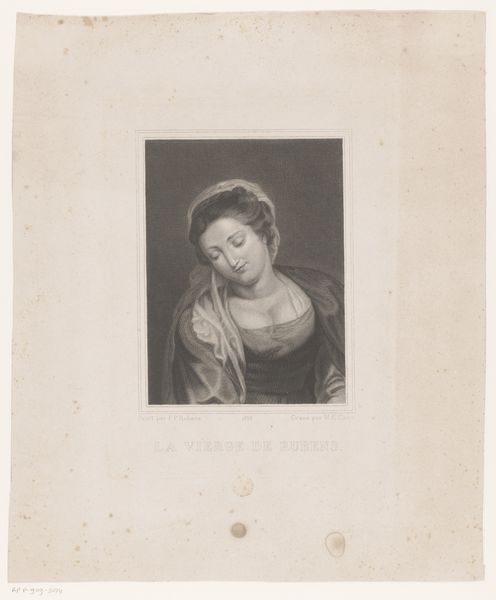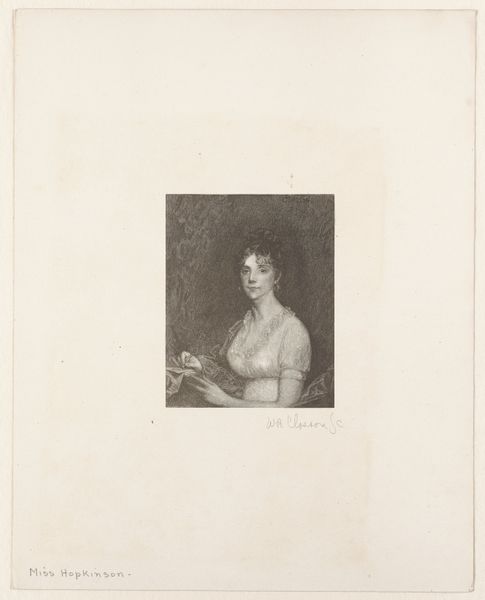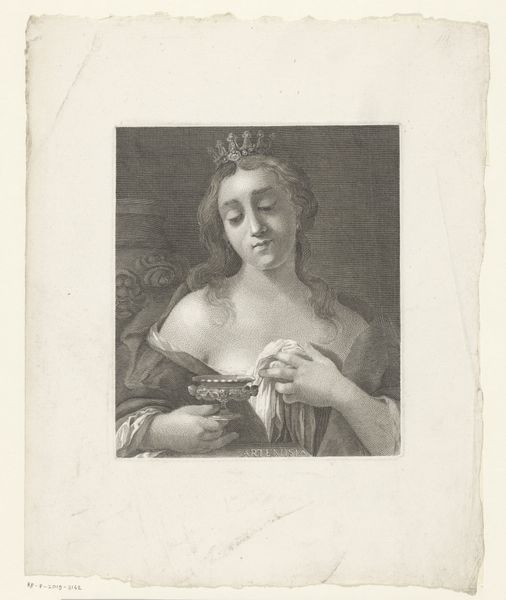
Dimensions: height 273 mm, width 216 mm
Copyright: Rijks Museum: Open Domain
Editor: We're looking at "Buste van een Venetiaanse vrouw, half op de rug gezien," or "Bust of a Venetian Woman, Seen Half from the Back," a print made between 1861 and 1889 by William Unger. The delicacy of the lines in the engraving gives it a kind of melancholic, pensive feel. What can you tell me about this image? Curator: Considering the timeframe and Unger’s work, it's important to understand this print as participating in the rise of art reproduction as a significant industry. Engravings like this democratized access to images. Who now could not acquire a version of a historically relevant work of art or iconic figure, displayed conveniently for at-home enjoyment and reflection? Editor: So, it's less about original artistic expression, and more about dissemination? Curator: Precisely! Think about the context: the growth of the middle class, the burgeoning art market, and a hunger for culture. Prints like these fuelled that. Unger, in creating this print, provided a certain experience and social utility, one deeply entwined with making imagery available for an emergent public, and for solidifying ideas around art. Why do you think these types of images proved popular at that moment? Editor: Because more people had access to cultural capital than ever before. That makes sense! I didn’t initially consider it within this context of broader societal shifts influencing art consumption and access. Curator: It's all interconnected. When we study art history, it is crucial to look beyond what is visually present to uncover the forces that propelled its creation, distribution, and reception, thus revealing its profound place within history. Editor: Thanks. Now I understand how this reflects an increasing public engagement with art.
Comments
No comments
Be the first to comment and join the conversation on the ultimate creative platform.
